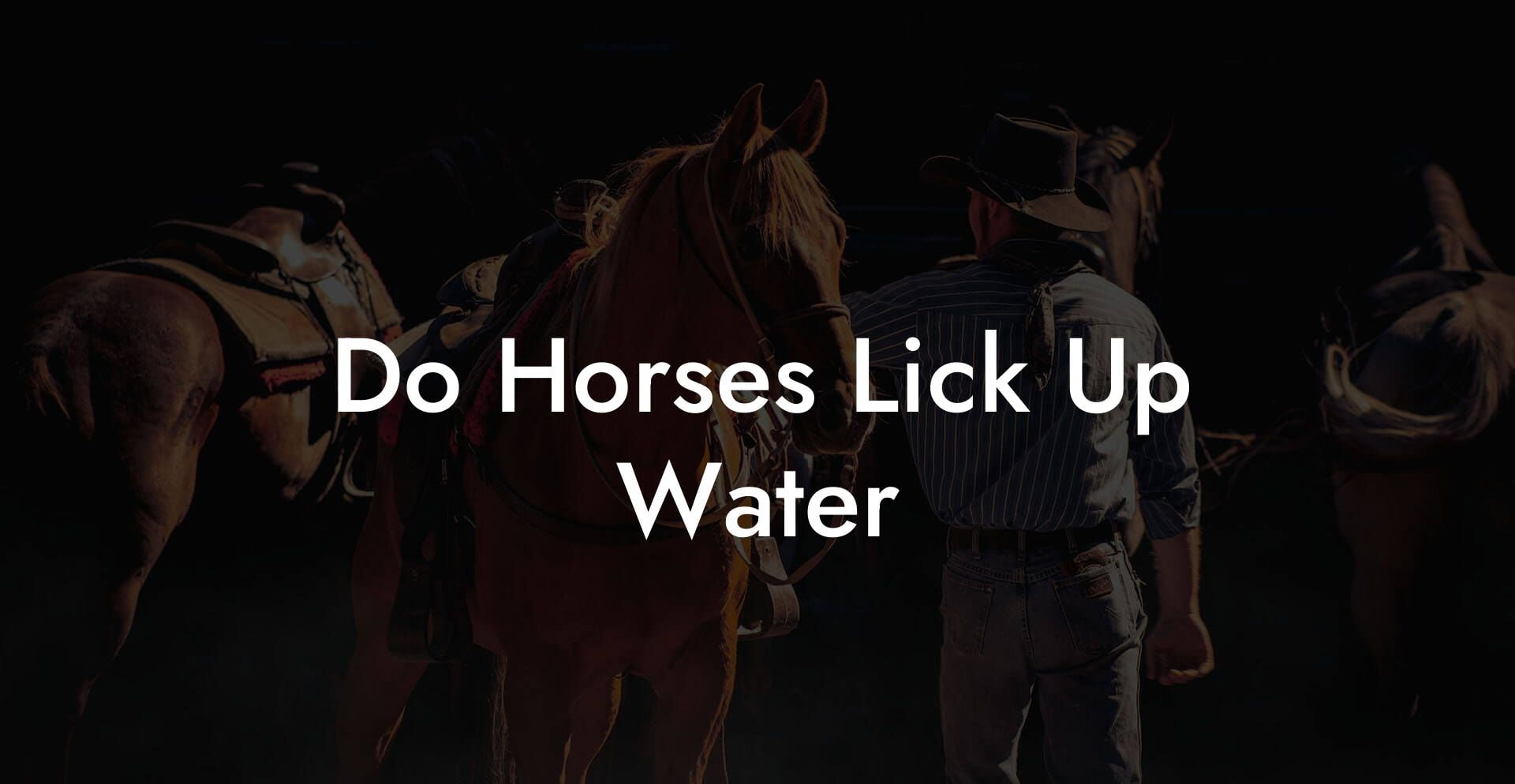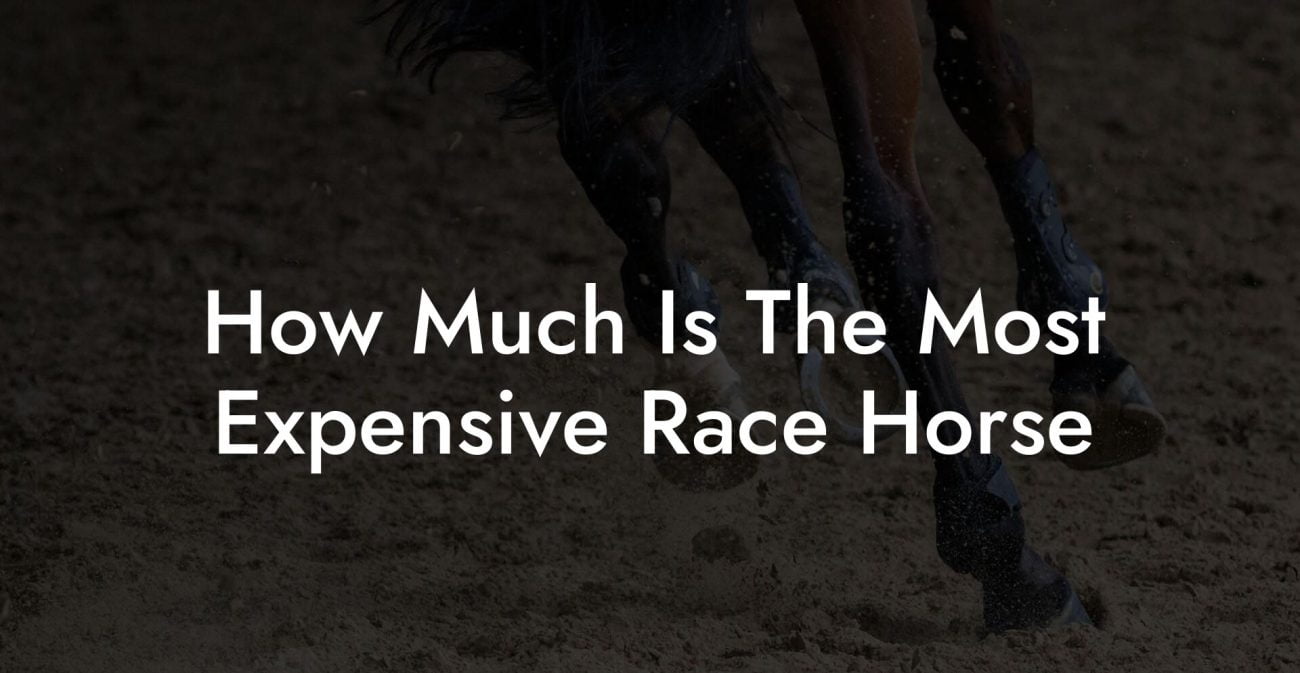Ever caught your horse giving water a little extra smooch, like it’s savoring every drop with a quirky, almost affectionate gesture? You’re not imagining things, the phenomenon of horses “licking up water” is as fascinating as it is endearing. From the way their flexible tongues dance across a water trough to the surprising reasons behind their behavior, this deep dive explores the intricacies of equine hydration in a style that’s equal parts informative and entertaining. Whether you’re a first-time horse owner or a seasoned equestrian, get ready to uncover the science, myths, and practical tips behind why horses sometimes appear to “lick up” water.
Quick Links to Useful Sections
- Understanding Equine Hydration: More Than Just a Drink
- The Science Behind the Slurp: How Horses Drink, and Why They Lick
- The Role of the Equine Tongue
- Water Quality: Why Every Drop Counts
- Behavioral Cues: When Licking Signals More Than Thirst
- 1. Social Bonding and grooming
- 2. Environmental Exploration
- 3. Salt Cravings and Nutritional Needs
- Equine Hydration Methods: Drinking Styles Compared
- The Gulp and Go
- The Lick and Linger
- The Occasional Mixer
- Environmental Factors: How Climate and Setup Affect Drinking Behavior
- Stable Design and Water Trough Placement
- Seasonal Considerations
- When Extra Licking Might Signal a Problem
- Water Contamination
- Dental or Oral Issues
- Nutritional Deficiencies
- Modern Innovations: Tech Meets Tradition in Equine Hydration
- Practical Steps to Optimize Your Horse’s Hydration
- Step 1: Conduct Regular Water Quality Checks
- Step 2: Keep Troughs Clean and Well-Maintained
- Step 3: Optimize Trough Location and Design
- Step 4: Monitor Behavioral Changes
- Step 5: Incorporate Salt and Mineral Supplements Wisely
- Community Insights: Horse Care Stories and Social Wisdom
- Integrative and Holistic Equine Hydration: A Case Study Approach
- Case Study 1: From Parched to Thriving
- Case Study 2: The Nutritional Balance Act
- Case Study 3: Tech-Enabled Hydration Monitoring
- Bridging the Gap: How Horse Owners Can Innovate and Educate
- Resources and Community Support: Your Next Steps
- Your Journey to Mastering Equine Hydration
- Equine Hydration FAQs: Your Questions Answered
- The Final Gallop: Embracing a Holistic Approach to Equine Hydration and Care
Understanding Equine Hydration: More Than Just a Drink
Hydration is the cornerstone of a healthy horse lifestyle, affecting everything from their energy levels to their digestive system. Unlike humans, horses don’t simply grab a glass of water from the fridge, they have evolved specialized behaviors that help them stay hydrated in a variety of environments. Observing your horse’s behavior at the water trough might reveal playful licks, curious nibbles, or even unexpected sipping rituals that prompt the question: Do horses lick up water? In reality, these behaviors are deeply rooted in equine physiology and instinct.
Horses are exceptional athletes and naturally designed survivors. Their approach to water intake is as much about efficiency as it is about ensuring they absorb every beneficial mineral drop available. In the wild, every sip counted; ensuring adequate hydration was vital for survival. Today, domesticated horses continue these behaviors, though with a modern twist that embraces our collective desire for better care and understanding.
In this in-depth exploration, we’ll peel back the layers on equine hydration, debunk common myths, and equip you with actionable tips to optimize your horse’s water intake. From the wonders of equine tongue mechanics to the surprising role of salt and minerals, consider this your ultimate guide to decoding why and how horses interact with water.
The Science Behind the Slurp: How Horses Drink, and Why They Lick
At first blush, watching a horse drink might seem like a simple act. However, the mechanics behind this everyday behavior reveal a captivating interplay between physiology and instinct. Horses drink by placing their lips around a water source and sucking it up with rapid contractions of their cheek and tongue muscles. But what about that extra “lick”?
The act of licking isn’t just a quirky habit, it’s a refined behavior with several purposes. Firstly, the tongue of a horse is incredibly sensitive, filled with taste buds that can detect slight differences in water composition. This tactile sense allows horses to evaluate water quality, ensuring they’re ingesting the best hydration possible. A quick lick might be their way of sampling a new water source, confirming its suitability before taking a larger gulp.
The Role of the Equine Tongue
The equine tongue is an amazing instrument of nature. Soft yet muscular, it’s designed for both delicate tasting and efficient suction. When a horse licks water, it’s essentially performing a quality check. Factors such as temperature, mineral content, and even the presence of trace elements like sodium can influence a horse’s willingness to drink. For many horses, a few exploratory licks help them decide if they’re ready for a full-on gulp session.
Moreover, licking is a behavior inherited from wild equine ancestors. In arid climates, licking dry surfaces kissed by morning dew or rain can be a quick fix to their hydration needs. Even today, domesticated horses retain these habits. Gen-Z and millennial horse enthusiasts will appreciate how modern care builds on ancient instincts, enhancing behavioral understanding with technological advances, from smart watering systems to water quality sensors.
Water Quality: Why Every Drop Counts
Ensuring that your horse’s water is fresh and clean is paramount. Horses are particularly sensitive to changes in water quality, and a few stray minerals or contaminants can completely alter their drinking habits. When a horse licks up water, it might be a sign that something is off, maybe the water tastes different or doesn’t meet their exacting standards.
Key elements that influence water quality include:
- Mineral Content: Trace minerals are essential for equine health. However, too much of a good thing can turn water into an undesirable tasting solution. Balance is key.
- Temperature: Just as you’d prefer a chilled beverage on a hot day, horses can be particular about water temperature. Mildly cool water is often more appealing than water that’s too warm.
- Clarity and Purity: Sediments, algae, or any particulate matter can turn off a horse’s palate. Regularly cleaning and refilling water troughs ensures clarity that invites regular drinking.
- Salt and Electrolytes: Equine salt licks are popular for a reason. A horse’s need for salt can influence its drinking behavior. Sometimes, a horse may discreetly lick water to mix it with a trace of salt, optimizing their electrolyte intake.
As modern horse owners, especially among the younger generation, you’re likely obsessed with sustainability and wellness. Opt for water filtration systems that not only remove impurities but also maintain the ideal balance of necessary minerals. Explore eco-friendly solutions that ensure your horse’s water is as pristine as nature intended.
Behavioral Cues: When Licking Signals More Than Thirst
Sometimes, a simple lick isn’t just about tasting water, it’s a subtle form of communication. Many horses exhibit licking behavior as a multifaceted signal. Here are some scenarios where licking plays a role beyond hydration:
1. Social Bonding and grooming
In the horse world, licking isn’t reserved for water tasting alone, it's also a part of social bonding. Horses lick each other as a form of grooming and affection. When your horse dips its tongue into the water more than necessary, consider the possibility that it’s not just quenching its thirst but also engaging in a comforting, self-soothing ritual reminiscent of mutual grooming with a herd-mate.
2. Environmental Exploration
Think of a water trough as a mini sensory playground. New scents, residues from previous drinks, or even the aftermath of a recent rain can alter the sensory profile of the water. A curious horse might use its tongue to explore these changes, ensuring that the water is still safe and palatable. For inquisitive owners, this behavioral insight can be a cue to perform regular water quality tests.
3. Salt Cravings and Nutritional Needs
Salt is the unsung hero of equine nutrition. Many horses have an innate sense for salt deficiency, which can prompt increased licking. While a dedicated salt lick station is common in many pastures, sometimes the water itself carries subtle flavors of sodium. A horse’s additional licking behavior is a sign that it’s securing its salt intake to complement its overall diet.
Recognizing these subtle behavioral cues can transform how you interact with and care for your horse. Monitoring licking patterns can be a window into their overall health, alerting you to potential issues such as water contamination or dietary deficiencies before they become serious.
Equine Hydration Methods: Drinking Styles Compared
Horses are not a monolithic species when it comes to hydration methods; much like humans, they have individual preferences that can range from a straightforward gulp to a more methodical lapping and licking routine. Let’s break down the common hydration styles observed in horses:
The Gulp and Go
This is the classic image of a horse right out of a movie, a swift, powerful gulp that replenishes their water reservoir in a matter of seconds. Gulping is typical when the water source is appealing and free of any unusual tastes. In this mode, the horse’s tongue is up for a brief cameo, with most of the action happening as a rapid intake.
The Lick and Linger
Some horses prefer to take a moment with each sip. The “lick and linger” method involves several careful licks before a full gulp, allowing the horse to savor and assess the water. This behavior might indicate that the horse is being discriminant about water quality, or it could point to a preference shaped by past experiences, maybe from days spent grazing near salty streams.
The Occasional Mixer
In certain situations, a horse might exhibit a combination of both drinking and licking behaviors. For instance, after a hard day’s ride or an intense competition, horses might first lick a bit to determine if the water’s temperature is just right before diving in for a hearty drink. In this manner, their behavior is not random but a measured response to their physiological needs.
Understanding these distinct hydration methods can empower you to customize the care that you provide. Whether you’re managing a busy stable or a cozy backyard pasture, adjusting water trough design and placement can help cater to your horse’s unique drinking style.
Environmental Factors: How Climate and Setup Affect Drinking Behavior
The environment in which your horse drinks plays a crucial role in its hydration habits. Factors such as ambient temperature, weather conditions, and even the design of the water trough can significantly influence whether your horse opts for quick gulps or meandering licks.
When temperatures soar, horses naturally increase their water intake to stay cool. However, if the water is too cold, some horses might hesitate, engaging in extra licks to acclimate the temperature to their liking. In contrast, on chilly days, a warming trick like slightly warmed water might encourage a more fluid drinking pattern.
Stable Design and Water Trough Placement
The design of your stable or pasture can either invite or deter proper hydration. Troughs placed in direct sunlight might heat up quickly, turning water into a lukewarm, less appealing drink. Consider investing in insulated troughs or providing shade to keep water at an optimal temperature. Regular cleaning is essential too, as algae buildup or sediment in the water can lead to repetitive licking as horses try to rinse away the off-flavors.
Seasonal Considerations
Seasonal shifts change the game entirely. In winter months, frozen water surfaces might tempt a horse into licking residual melts rather than drinking directly, while in summer, dust and debris can contaminate the water, prompting extra caution. Billions of drops of water may go to waste if not managed properly, but with an observant eye, you can tailor your water management strategy to suit every season.
Gen-Z and millennial horse owners are often tech-savvy and environmentally conscious, this makes exploring smart watering systems and solar-powered water heaters an exciting proposition. These modern innovations not only streamline daily maintenance but also ensure that your horse’s liquid intake remains top-notch regardless of external conditions.
When Extra Licking Might Signal a Problem
While it’s perfectly normal for horses to employ a mix of licking and drinking behaviors, sometimes extra licking might be a red flag. Changes in licking habits can indicate a range of issues, from water quality problems to health concerns that require attention.
Water Contamination
If you notice that your horse is repeatedly licking the sides of the trough without drinking, it could be their way of “testing” the water for impurities. The presence of contaminants such as algae, bacteria, or even high levels of minerals might prompt extra licking behavior before committing to a full drink. Regularly monitoring and cleaning the water supply is essential to prevent such scenarios.
Dental or Oral Issues
Another possible explanation for excessive licking is discomfort caused by dental problems or oral lesions. A horse with sore gums or dental issues might adopt a different drinking technique. If the behavior is accompanied by signs of distress or hesitation, it’s worth a prompt visit to the equine veterinarian or dental specialist.
Nutritional Deficiencies
Sometimes, an increased focus on licking isn’t just about water at all, it’s about seeking out nutrients. Horses with a craving for salt or specific minerals might engage in extra licking as a compensatory behavior. Assessing your horse’s diet and ensuring that their nutritional needs are met, whether through enriched feeds or designated salt blocks, can alleviate this odd behavior.
By staying vigilant and understanding the nuances behind every lick, you can preemptively address potential health or environmental concerns before they escalate. This proactive approach not only safeguards your horse’s well-being but also enhances your reputation as a knowledgeable and caring horse owner.
Modern Innovations: Tech Meets Tradition in Equine Hydration
Today’s horse care landscape is as much about smart technology as it is about understanding traditional equine behaviors. The latest innovations in hydration technology allow you to monitor water quality, temperature, and usage patterns more effectively than ever before.
Here are a few modern solutions you might consider embracing:
- Smart Water Troughs: These troughs come equipped with sensors that track water consumption and alert you when it’s time for a refill or a cleaning. Some models even monitor water temperature and quality, ensuring that your horse always has access to optimal hydration.
- UV Water Purifiers: UV purification systems effectively sanitize water, removing pathogens and harmful bacteria without affecting the mineral content that horses need.
- Automated Watering Stations: These systems can dispense water at regular intervals, ensuring that even in busy stables or remote pastures, your horse has access to fresh water around the clock.
- Mobile Apps and Digital Logbooks: Documenting your horse’s water intake and behavior patterns can help spot trends and potential issues before they develop into major concerns. Modern digital logbooks make this process quick, efficient, and accessible from anywhere.
Integrating these technologies not only improves the efficiency of your horse care routine but also helps build a comprehensive understanding of hydration patterns. For millennial and Gen-Z equestrians, this blend of tradition and modern tech is the perfect way to ensure that your horse’s water needs are met with precision and care.
Practical Steps to Optimize Your Horse’s Hydration
Now that you know the science and behavior behind why horses sometimes lick up water, it’s time to focus on practical, everyday steps you can take to ensure your equine friend is drinking enough fluids and staying healthy.
Step 1: Conduct Regular Water Quality Checks
Start with the basics. Regularly testing your water for contaminants, excessive minerals, or improper pH levels can go a long way in ensuring that your horse enjoys every sip. Consider investing in water testing kits or smartphone-compatible water monitors to keep tabs on the quality.
Step 2: Keep Troughs Clean and Well-Maintained
A spotless trough isn’t just visually appealing, it’s essential for good hydration habits. Schedule frequent cleanings to remove any buildup of algae, sediment, or biofilm that might deter your horse from drinking adequately. A clean environment encourages healthy licking and drinking patterns, ensuring your horse gets the best possible water experience.
Step 3: Optimize Trough Location and Design
Position water troughs in shaded, easily accessible areas. The simpler it is for your horse to get to its drink, the more likely it is to stay hydrated. Consider adjustable troughs or insulated designs that keep water at an appealing temperature in every season.
Step 4: Monitor Behavioral Changes
Take note of any shifts in your horse’s licking or drinking behavior. A sudden increase in licking might signal a water quality issue, a nutritional deficiency, or even an oral health problem. Use this insight to make timely adjustments in your care routine and schedule veterinary checkups as needed.
Step 5: Incorporate Salt and Mineral Supplements Wisely
If your horse seems fixated on licking water as a means of maximizing salt intake, it might be time to review its dietary regimen. A controlled salt or mineral supplement, provided through a dedicated salt block or feed additive, can ensure that your horse isn’t over-relying on water to meet its nutritional needs.
By implementing these practical strategies, you not only improve your horse’s hydration but also build a holistic approach to overall equine wellness. Empowered with knowledge and tools, you can make proactive decisions that enhance your horse’s quality of life.
Community Insights: Horse Care Stories and Social Wisdom
In a vibrant online community of horse owners, countless anecdotes reveal that hydration is as much a social topic as it is a health imperative. Whether it’s through viral TikTok clips or engaging Instagram stories, modern equestrians love sharing quirky water-related habits, from horses that “dance” at the sight of a fresh water refill to those that give a little extra lick of approval.
Social media platforms are brimming with content that underscores a simple truth: observing these behaviors offers invaluable insights into a horse’s health. When you spot a fellow enthusiast posting a video of their horse’s unique drinking style, take a moment to appreciate the underlying biology and care routines that make equine hydration so utterly fascinating.
Engaging with online communities can also serve as a great resource for troubleshooting. Have you noticed changes in your horse’s licking behavior and aren’t sure why? Chances are, someone else has experienced the same issue. Forums, Facebook groups, and dedicated equestrian blogs are treasure troves of shared knowledge, complete with firsthand tips on water trough innovations, dietary modifications, and veterinary recommendations.
Integrative and Holistic Equine Hydration: A Case Study Approach
Let’s explore some real-life examples of how understanding and managing equine hydration, including the quirky habit of water licking, can transform a horse’s overall well-being.
Case Study 1: From Parched to Thriving
Bella, a spirited mare known for her unpredictable sips and extra licks at the water trough, was once prone to dehydration during scorching summer days. Her caretaker noticed that Bella’s licking became more frequent during midday. By installing a smart, shaded water trough with a UV purifier and scheduling regular water quality checks, Bella’s hydration improved dramatically. Not only did Bella start gulping water without hesitation, but her overall energy levels, coat shine, and digestive health also saw a pleasant boost.
Case Study 2: The Nutritional Balance Act
Rocky, a robust stallion with a penchant for extra licking, was on a salt-deficient diet. His excessive water-licking behavior became a silent cry for help. After a thorough nutritional assessment and the introduction of a controlled salt supplement via a dedicated salt lick, Rocky’s behavior normalized. The blend of smart dietary adjustments with careful observation of his drinking habits ensured that he no longer needed to overcompensate through repetitive licking.
Case Study 3: Tech-Enabled Hydration Monitoring
In a state-of-the-art equestrian center managed by a tech-savvy millennial team, an integrated hydration monitoring system tracked each horse’s water intake in real time. When one gelding began to exhibit increased licking behavior, alerts from the system prompted a swift investigation. It turned out that minor sediment buildup had altered the water’s taste. A quick cleaning and a switch to a filtered water line restored normal drinking patterns. This case study beautifully illustrates how modern technology, mixed with an understanding of traditional equine behaviors, can enhance overall care.
These stories aren’t just compelling, they serve as tangible proof that when you treat your horse’s hydration as a dynamic, multifaceted process, the results echo throughout their overall health.
Bridging the Gap: How Horse Owners Can Innovate and Educate
As more horse enthusiasts embrace integrative techniques (melding modern technology with traditional care), the question “Do horses lick up water?” transcends a simple observation. It becomes a conversation starter about equine health, hydration innovation, and the importance of preventative care.
Whether you’re an experienced rider or a curious newcomer, here are some actionable steps to elevate your horse care game:
- Stay Educated: Follow equine science blogs, join online equestrian communities, and subscribe to newsletters that offer the latest research on hydration and nutrition.
- Embrace New Tech: Consider upgrading your stable with smart water troughs, digital monitoring systems, and automated feeding solutions that integrate hydration tracking.
- Share Your Insights: Social media isn’t just for memes! Share your horse care experiences using hashtags like #SmartStable, #EquineTech, and #HydrationHacks to connect with a community that values innovation and care.
- Engage with Experts: Regular consultations with veterinarians, equine nutritionists, and experienced trainers can personalize your horse’s hydration strategy and preempt any issues before they escalate.
- Sustainability Counts: Explore eco-friendly options for water filtration and trough design. Not only do these choices benefit the planet, but they also contribute to a cleaner, more consistent water supply for your equine companion.
By actively engaging in these practices, you build a robust network of knowledge and support, a community passionate about elevating horse care practices that respect both tradition and innovation.
Resources and Community Support: Your Next Steps
Ready to dive even deeper into the world of equine hydration? There’s a wealth of resources available for you to explore. From specialized online courses to interactive webinars and vibrant forums, you can connect with experts and fellow horse enthusiasts who share your passion.
Some recommended resources include:
- Equine Science Online Courses: Look for courses focused on equine nutrition and hydration best practices offered by reputable universities and veterinary schools.
- Social Media Communities: Platforms like Instagram, TikTok, and Facebook feature horse care influencers who share practical tips, success stories, and tutorials on everything from stable management to water quality management.
- Local Workshops and Seminars: Community events hosted by equestrian centers and veterinary associations can offer hands-on training and networking opportunities.
- Books and eBooks: Expand your library with well-reviewed titles dedicated to equine care, ensuring that your knowledge continues to evolve along with your horse care routine.
- Veterinary Consultations: Regular visits from a trusted veterinarian can provide tailored advice on hydration, nutrition, and overall health monitoring for your horse.
Engaging with these resources not only maximizes your understanding of why horses lick up water but also empowers you to transform that knowledge into everyday practices that benefit your horse’s well-being. Remember: every extra lick, every thoughtful adjustment, and every moment you invest in understanding your horse’s needs paves the way for a healthier, happier animal.
Your Journey to Mastering Equine Hydration
The world of equine hydration is as intricate as it is captivating. From the science that drives a horse’s tendency to lick up water to the practical steps you can take to ensure optimal care, every detail matters. In a way, the behavior itself is a testament to the remarkable design of these majestic animals, blending ancient instincts with modern needs in a way that’s both heartwarming and scientifically intriguing.
As you continue to care for your horse, let these insights spark your curiosity and drive innovation in your stable. Whether you’re troubleshooting an unusual licking pattern, upgrading your water systems, or simply marveling at your horse’s unique behaviors, this guide is here to remind you that every drop counts.
Embrace the journey with enthusiasm and a bit of humor. After all, the next time you see your horse gently licking its slow-moving water, you’ll know that it’s not just a quirky habit, it’s nature’s way of saying, “I trust you to keep my world balanced and beautiful.”
By merging traditional equine wisdom with modern techniques, you are not only elevating your horse care routine, you’re also joining a generation of passionate, innovative horse owners who value transparency, science, and a little bit of quirky charm in the process.
So, here’s to endless discoveries, clearer water, and the joyful licks that remind us every day that when it comes to caring for our horses, every detail counts.
Equine Hydration FAQs: Your Questions Answered
Below are some frequently asked questions that tackle the intriguing world of equine hydration and the behavior of water licking:
1. Do horses actually lick water, or is it just a myth?
Horses do sometimes exhibit licking behavior around water. This isn’t just a quirky habit, it’s a way for them to gauge water quality, taste for minerals, and even engage in self-soothing behaviors.
2. What does it mean if my horse licks the trough excessively?
Excessive licking might indicate dissatisfaction with water quality, a need for more salt or minerals, or, in some cases, an underlying dental or oral issue. Monitoring your horse’s overall behavior and conducting routine water tests can help clarify the cause.
3. How important is water temperature in a horse’s drinking habits?
Very important! Horses generally prefer mildly cool or room temperature water. Water that’s too cold or too warm can alter their normal drinking behavior and might prompt extra licking to test the temperature.
4. Can technological innovations really improve a horse’s hydration?
Absolutely. Smart water troughs, UV purification, and automated systems help ensure that water is always of optimal quality and temperature, making it easier for horses to hydrate properly.
5. Should I be concerned if my horse occasionally licks water before drinking?
Not at all, occasional licking is normal and is part of how horses evaluate their water. However, if you observe a sudden or drastic change in behavior, it may be wise to check the water quality or consult with a veterinarian.
6. What role do salt licks play in equine hydration?
Salt licks provide essential electrolytes that horses need. When water tastes balanced, your horse is likely to drink more efficiently. Extra licking can sometimes be a sign that the current water is lacking in salt or other minerals.
7. How often should I check the water quality in my stable or pasture?
Regular checks, ideally daily during hot weather and at least a few times a week otherwise, are recommended. Routine testing helps prevent contamination, algae buildup, and ensures optimal mineral balance.
8. Can hydration behavior indicate other health issues?
Yes. Changes in drinking and licking patterns can signal dental problems, nutritional deficiencies, or even environmental stressors. Keeping a journal of these behaviors can help you pinpoint and address potential issues early.
The Final Gallop: Embracing a Holistic Approach to Equine Hydration and Care
Delving into the curious behavior of horses licking up water opens up a broader dialogue about equine care, one that spans from ancient instinct to modern innovation. Every lick, gulp, and measured sip is a reminder of the intricate balance between an animal’s biology and its environment. For the conscientious horse owner, this isn’t just about hydration; it’s about a commitment to nurturing every facet of equine health.
As you refine your horse care routine, let these insights guide you to a more mindful, proactive approach. By ensuring optimal water quality, embracing modern technological solutions, and paying close attention to subtle behavioral cues, you can make a significant impact on your horse’s overall quality of life.
When it comes to water intake, every detail matters, from the first tentative lick to the hearty gulp that signifies a well-hydrated, contented horse. Embrace these quirky behaviors as part of the magnificent tapestry that is equine nature, and let them inspire you to innovate, experiment, and connect with your horse on a deeper, more meaningful level.
Your journey to mastering equine hydration is a dynamic blend of art and science, a journey that celebrates the timeless instincts of these majestic creatures while integrating the best that modern care has to offer. Happy hydrating, and here’s to many more moments of discovery in the wondrous world of horses!













